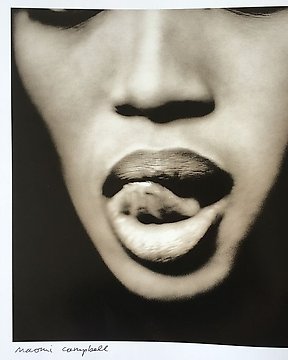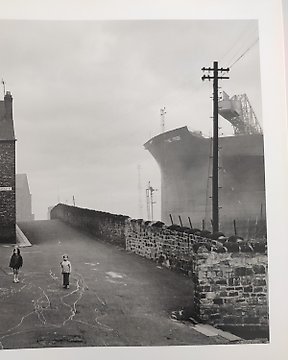Helmut Newton - Helmut Newton Work + Helmut Newton Portraits/Portretten - 1986/2000
Nr 58389615

August Sander, Alfred Döblin - August Sander 1876-1964 - 1999
Nr 58389615

August Sander, Alfred Döblin - August Sander 1876-1964 - 1999
FANTSTIC OVERVIEW of the FASCINATING WORK of August Sander,
one of GREATEST GERMAN PHOTOGRAPHERS EVER.
With all his famous pictures, portraits and with some of his best photos of Cologne and the "Rheinland".
VERY FRESH CONDITION.
August Sander is one of the most influential photographers ever, especially famous for "Face of out time. 60 photographs of Germans" (1929):
- Andrew Roth, The Book of 101 books, page 52/53
- Martin Parr, Gerry Badger, The Photobook, volume 1, page 124
- The Open Book, Hasselblad Center, page 84/85
- 802 photo books from the M. + M. Auer collection, page 13
Welcome to the "GERMAN PHOTOBOOKS" auction by Ecki Heuser (5Uhr30.com, Cologne) -
with more than 100 fantastic lots.
IF YOU WIN MORE THAN 1 BOOK IN THIS AUCTION, YOU WILL PAY ONLY 1 X SHIPPING COSTS -
WORLDWIDE.
"August Sander (1876-1964) was a German portrait and documentary photographer. His first book Face of our Time (German: Antlitz der Zeit) was published in 1929. Sander has been described as "the most important German portrait photographer of the early twentieth century". Sander's work includes landscape, nature, architecture, and street photography, but he is best known for his portraits, as exemplified by his series People of the 20th Century. In this series, he aims to show a cross-section of society during the Weimar Republic."
(Wikipedia)
Taschen, Cologne, Los Angeles. 1999. First edition, first printing.
Hardcover with dustjacket. 270 x 335 mm. 252 pages. Edited by Manfred Heiting. Photos by August Sander. Design: Lambert and Lambert, Düsseldorf. Essay by Susanne Lange. With a porträt by Alfred Döblin. Text in German and English.
Condition:
Book and dustjacket excellent, fresh and clean with no marks and with no foxing. Marginal trace of use; neat imperfection at the bottom of front cover, otherwise like new and unread. Overall very fine condition.
FANTASTIC BIG PHOTOBOOK - with a "best of" August Sander's work.
"Sander was born on November 17, 1876 in Herdorf, the son of a carpenter working in the mining industry. He had six siblings. While working at the local Herdorf iron-ore mine, Sander first learned about photography by assisting a photographer from Siegen who was also working for the mining company. With financial support from his uncle, he bought photographic equipment and set up his own darkroom.
Sander spent his military service (1897–1899) as an assistant to Georg Jung of Trier; they worked throughout Germany including in Berlin, Magdeburg, Halle, Leipzig and Dresden. In 1901, he started working for Photographische Kunstanstalt Greif photo studio in Linz, Austria-Hungary, becoming a partner in 1902, and then sole-owner. In the late 1940's he joined the Upper Austrian Art Society. Sander left Linz at the end of 1909 or 1910[4] and set up a new studio at Dürener Strasse 201 in the Lindenthal district of Cologne.
In 1911, Sander began with the first series of portraits for his work People of the 20th Century [de]. In this series, he aims to show a cross-section of society during the Weimar Republic. The series is divided into seven sections: The Farmer, The Skilled Tradesman, Woman, Classes and Professions, The Artists, The City, and The Last People (homeless persons, veterans, etc.).
In the early 1920s, he came in contact with the Cologne Progressives, a radical group of artists linked to the workers' movement, which, as Wieland Schmied put it,
"sought to combine constructivism and objectivity, geometry and object, the general and the particular, avant-garde conviction and political engagement, and which perhaps approximated most to the forward looking of New Objectivity [...] ".
In 1927, Sander and writer Ludwig Mathar travelled through Sardinia for three months, where he took around 500 photographs. However, a planned book detailing his travels was not completed.
Sander's Face of our Time was published in 1929. It contains a selection of 60 portraits from his series People of the 20th Century, and is introduced by an essay by Alfred Döblin titled "On Faces, Pictures, and their Truth". Under the Nazi regime, his work and personal life were greatly constrained. Sander's 1929 book Face of our Time was seized in 1936 and the photographic plates destroyed.
Around 1942, during World War II, he left Cologne and moved to the small village of Kuchhausen, in the Westerwald region; this allowed him to save the most important part of his body of work. His Cologne studio was destroyed in a 1944 bombing raid, but tens of thousands of negatives, which he had left behind in a basement near his former apartment in the city, survived the war. 25,000 to 30,000 negatives in this basement were then destroyed in a 1946 fire.[4] That same year, Sander began his postwar photographic documentation of the city. He also tried to record the mass rape of German women by Red Army soldiers in the Soviet occupation zone.
In 1953, Sander sold a portfolio of 408 photographs of Cologne, taken between 1920 and 1939, to the Kölnisches Stadtmuseum. These would be posthumously published in book format in 1988, under the title Köln wie es war (Cologne as it was).
In 1962, 80 photographs from the People of the 20th Century project were published in book format, under the name Deutschenspiegel. Menschen des 20. Jahrhunderts (German Mirror. People of the 20th Century).
Sander married Anna Seitenmacher in 1902. They gave birth to Erich (son, born in 1903) and Gunther (son, born in 1907), and girl twins in 1911, Sigrid and Helmut, only Siugrid survived. Anna died on May 27 1957 in Kuchhausen, Germany.
Erich, who was a member of the left wing Socialist Workers' Party (SAP), was arrested by Nazis in 1934 and sentenced to 10 years in prison, where he died of an untreated ruptured appendix in 1944,[4] shortly before the end of his sentence.
Sander died in Cologne of a stroke on 20 April 1964. He was buried next to his son Erich in Cologne's Melaten Cemetery.
In 1984 Sander was inducted into the International Photography Hall of Fame and Museum.
In Wim Wenders' 1987 film Der Himmel über Berlin ("Wings of Desire"), the character Homer (played by Curt Bois) studies the portraits of People of the 20th Century (1980 edition) while visiting a library.
In 2008, the Mercury crater Sander was named after him.
The highest price reached by one of his photographs was when Bricklayer sold by $749.000 at Sotheby's New York, on 11 December 2014."
(Wikipedia)
Du kanske också gillar
- 16+
Detta objekt förekom i
Hur du köper på Catawiki
1. Upptäck något speciellt
2. Lägg det högsta budet
3. Gör en säker betalning




